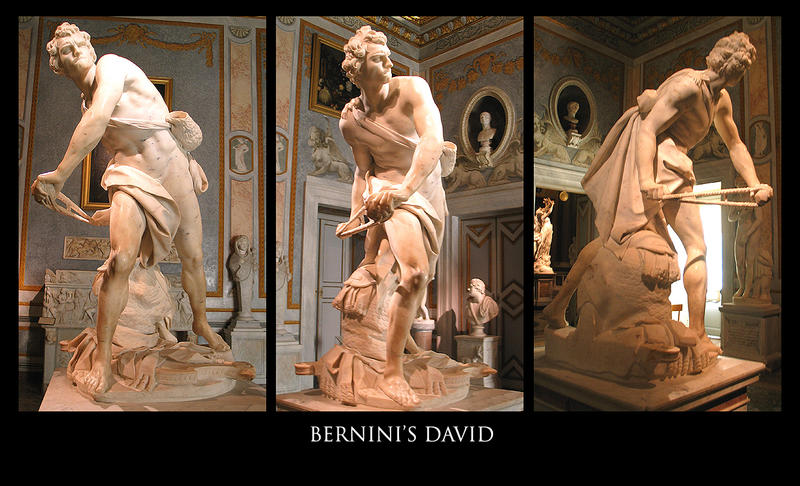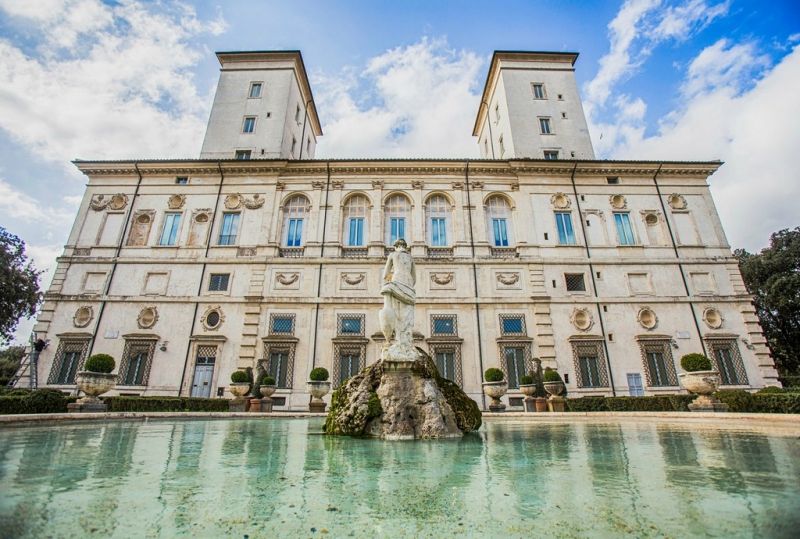A Closer Look into Another Masterpiece by Bernini: The David Sculpture
Welcome, everyone! Now, if you’re someone like us, someone who enjoys history and art, and exploring one of the most fascinating works of art - you’re in the right place. Let us introduce you to Gian Lorenzo Bernini, he created the fascinating sculpture - The David. From its expressive poses up until the most intricate details, we’re here to explore the elements that make this sculpture so incredibly remarkable, one so glorious.
Bernini’s David takes the form of David in his youth aiming his slingshot that would incapacitate the giant, Goliath. Bernini sculpted the Baroque masterpiece with marble and bronze. Bernini depicted David as a man with an athletic build like that of a soldier but unlike Michelangelo’s David, his body is not the most emphasized part of the sculpture but rather it is the tension the figure holds, the various emotions David’s expression shows, and the story that the sculpture tells us not just literally but also that of the Christian faith. Additionally, part of the sculpture but not entirely the focus is the armor that David took off, just placed behind him, before facing his opponent half-naked. A trait unique to this Baroque sculpture is the display of a different side to David’s being, a more aggressive side that showcases David’s tenacity and humanity in his battle against Goliath, and to an extent, fate itself.
The subject matter, David, takes a kinetic pose of preparing his shot against his opponent while staring at him with eyes filled with determination. The expression of David is that of a man who presents himself nearly naked; only armed with a sling, a rock, and his sense of duty to fight for his country. The symbolism of David leaving behind his armor on the ground and behind him shows David facing his opponent with only the strength of his body and the warrior spirit within him. Bernini captures the story of David slaying the giant in a way that makes it seem that we are watching a scene out of a film. This is achieved through the vision Bernini saw in sculpting David that depicts the subject matter in motion; that being in the middle of action. Aside from the marvelous eye for detail for David’s anatomy and physique, it is this very element that is most impressive in the sculpture. This effect makes the sculpture not just portray a sublime figure but also tells a narrative of courage against all odds.
Through its distinctive formal elements, it exemplifies the ideals of Baroque sculpture. The expressive positions of this sculpture are among its most remarkable characteristics. David is portrayed by Bernini throwing a stone at Goliath. David is seen in the middle of an action, his body contorted and twisted, his arm drawn back, and his eyes focused on Goliath This dynamic position stimulates the intensity that define Baroque sculpture.
Another striking element in this David sculpture is just how precise and intricate the details in this sculpture are - from the delicate folds to the carved patterns in the stone. The way that light and shadow are used in Bernini's David is another noticeable and important aspect. The figure is illuminated in a gentle, diffused light that brings out the body's outlines and gives it depth and character. Numerous creatives of the epoch implemented this methodology, an emblematic attribute belonging to Baroque craftsmanship, in order to infuse their works with heightened theatricality and fervor. Additionally, David is portrayed expressing powerful emotions. The sculpture's dynamic perspective, employing light and shadow and detailed embellishment all come together to portray the figure as he defeats Goliath.
Dear reader, you may have noticed how we have been going on and on about this glorious masterpiece. We just can’t help but admire how intricate and detailed Bernini has created it to be. This David sculpture depicts the biblical hero David, who slew the giant Goliath with just one stone from his sling. The sculpture, which is currently located in Rome's Borghese Gallery, was made between 1623 and 1624.
The triumph of good over evil, bravery over fear, and the human spirit over adversity are all depicted in Bernini's sculpture of David. David is depicted in the sculpture poised to throw the stone at Goliath, his body tight and his face filled with purpose and deep concentration. With its dynamic composition, flamboyant motions, and intensely expressive face expressions, the sculpture also exhibits the emphasis on drama and theatricality that the Baroque style was known for. The sculpture's formal elements, which include the composition, materials, texture, and use of light and shadow, convey its message. With David's body twisted in a contrapposto pose and his right arm lifted, preparing to launch the stone, the sculpture's composition is very dynamic. With its strong contrasts of light and shadow, chiaroscuro lighting heightens the dramatic effect and gives the sculpture a sense of depth and three-dimensionality.
The sculpture's meaning is also influenced by its materials, which include marble and bronze. The sculpture's subject's significance is reflected in the choice of marble, a highly valued and pricey material, which also enhances David's appearance as a hero. The sculpture's foundation, which features the head of Goliath and is made of bronze, creates an interesting contrast to the composition and emphasizes David's victory over the enemy.
Overall, Bernini's sculpture of David is an impressive representation of how the human spirit can overcome misfortune and an excellent example of the dramatic and passionate characteristics of Baroque art.
We’ve come so far and we are at the end of our journey. Looking at this sculpture, we can’t help but play the “The Funeral March” by Frédéric Chopin. Frédéric Chopin’s 1837 Piano Sonata No. 2 in B-flat minor Op. 35, or more currently known as Chopin’s Funeral March perfectly encapsulates the feelings one would experience while gazing upon Bernini’s David.
A feeling that could be shared to what David was feeling at the exact moment before he threw the sling, a sense of dread, stress, and nervousness. As the stakes are much higher, the risks are greater, especially going up against a monster like Goliath. As the beginning of Chopin’s masterpiece shows, it starts with a deep and menacing melody, as if something bad is about to happen, yet after sometime it completely shifts to a melody that is sweet and light. Thus, showing how despite the odds stacked up against you, there is hope, light at the end of the tunnel. Perfectly encapsulates how David was able to overcome the challenge he is faced with at the moment, like a representation of the human spirit. It is both a menacing and relaxing melody. It truly is the perfect music to play while looking at a sculpture as dramatic yet impressive as Bernini’s David.
“The Funeral March” -- Frédéric Chopin
(1) Frédéric Chopin's Piano Sonata No 2 in B flat minor, Funeral March [HD] - YouTube)
It’s time to say goodbye; however, for now at least. Thank you for following us along this wonderful journey. We hope you experienced nothing but inspiration and glory, see you on our next journey as we explore and glorify more works of art.






Comments
Post a Comment